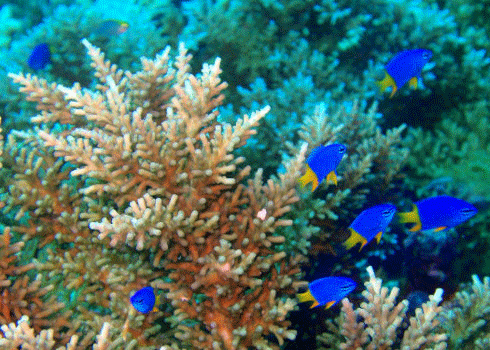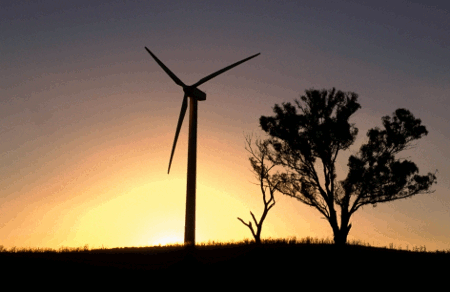
|
Published: 12 September 2011
Breaking up not always bad for reefs
Fragmentation of coral reefs may in some cases assist in recolonisation of reef species, according to a recent study of coral reef recovery in Papua New Guinea.

|
|
Reef fragmentation may reduce competition between species recolonising damaged coral reefs. Credit:
Mary Bonin
|
In the study, three researchers from the ARC Centre of Excellence for Coral Reef Studies and James Cook University constructed 30 artificial coral reefs from hundreds of tonnes of rock and gravel at Kimbe Bay, PNG.
‘When a reef suffers a heavy impact – such as a storm or outbreak of coral bleaching – there are two different effects on the coral habitat,’ explained one of the researchers, Dr Mary Bonin.
‘First, a lot of the habitat that was once available to fish is totally lost. Second, the habitat that still remains is often fragmented, or broken up into smaller patches.
‘We wanted to figure out if the increased habitat patchiness is actually a problem for coral reef fishes, or whether it is really the loss of habitat that causes fish to decline following an impact.’
Working with colleagues Professor Geoff Jones and Dr Glenn Almany, Dr Bonin topped each artificial reef with a square metre of living bottlebrush coral and stocked it with 20 small blue and yellow damselfish. They observed that the reef would eventually acquire richer diversity as baby fish came in on the current and settled.
The scientists then simulated habitat loss, fragmenation and a combination of the two processes.
‘As you’d expect, the effects of a loss of 75 per cent of the habitat were awful. With most of their home gone, the fish just disappeared,’ said Dr Bonin.
‘But when we divided some of the reefs into three separate parts, we found that fish survival and diversity actually improved for a time.
‘We think this is because a fragmented or patchy habitat reduces the competition between fishes, creating more room for the weaker ones or for newcomers to settle.’
This finding challenges a widely-held view that habitat fragmentation always leads to a dramatic loss of fish numbers and diversity.
‘Our findings suggest that it is actually habitat loss that is the major problem for coral reef fishes following an impact,’ Dr Bonin said.
‘The fact that habitat patchiness can have a positive effect on fish diversity is really exciting because it means that even if it isn’t possible for managers to restore an entire coral reef, it will still be highly beneficial to restore small patches of habitat.’
Source: ARC Centre of Excellence for Coral Reef Studies



